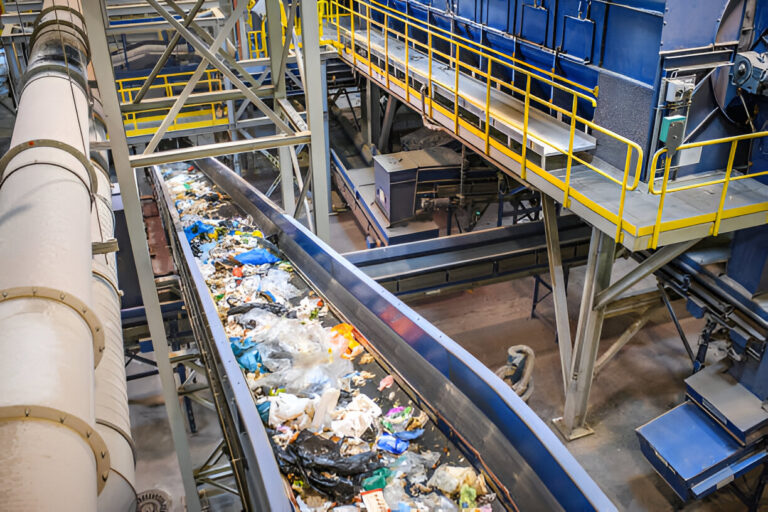Effective waste disposal is crucial for the air transportation industry’s sustainability and efficiency. In an industry where time is essential, having the best practices to deal with waste not only helps in cutting down costs but also supports the commitment to the environment. This article highlights key approaches to waste management that are specially designed for air travel. These include training staff, using advanced technology, promoting recycling, and ensuring waste is packaged correctly.
Standardized Procedures for Waste Separation
One of the crucial steps to ensure effective waste disposal in air travel is to have standardized procedures for waste separation. This practice entails teaching personnel about the need to separate recyclables, compostable materials, and general trash. When each type of waste has its own designated container, it greatly simplifies the process of disposal. Waste separation is particularly important on aircraft because space is limited.
Therefore, with standardized instructions, even cabin crew can quickly sort waste during flights. This initial act of sorting serves a greater purpose; it increases the overall effectiveness of waste management. Most importantly, it guarantees that valuable materials are not carelessly disposed of but rather directed toward recycling or appropriate treatment.
Staff Training and Awareness Programs
In the world of air travel, effective waste disposal hinges on properly educating personnel and raising awareness about its significance. This becomes even more critical in places like airports where many workers handle waste. Each member has to grasp the proper methods of separating and managing waste so that no confusion arises at any stage. Regular training sessions form an integral part of this education process, imparting knowledge about standard operating procedures alongside encouraging practices aimed at reducing waste generation.
However, merely concentrating on operational staff isn’t sufficient; cabin crew members aboard planes should also receive tailored instruction focusing specifically on in-flight waste management techniques. Such widespread comprehension equips everyone involved with the necessary abilities, thus ensuring efficient handling and meticulous disposal of waste across every segment of air transportation.
Advanced Waste Management Technologies
To optimize waste management procedures, the aviation sector should look into cutting-edge solutions created particularly for air travel. Compactors that minimize the volume of trash or systems that automatically identify and segregate recyclable materials are notable instances. They significantly increase disposal effectiveness. Moreover, tracking systems are instrumental in closely monitoring waste generation patterns and disposal methods. This data becomes indispensable when formulating strategies for bettering practices or recycling efforts. Simultaneously, investing in technology that aids in quicker sorting at treatment facilities should not be overlooked either; it ensures that different types of waste are processed efficiently and fast. The combined use of such advanced technologies propels the air industry’s waste management efficacy to new heights while concurrently supporting its sustainability objectives.
Proper Waste Packaging and Labeling
One key factor in effective disposal during air transport is the correct packing and tagging of waste. This principle becomes all the more vital when dealing with dangerous materials that necessitate special care. These materials must be securely packed, and their tags should clearly denote what they are in order to comply with aviation safety rules and to avert any possible risks associated with transportation. Additionally, managing onboard waste efficiently requires the use of specialized equipment, such as an aircraft lav cart, to ensure proper collection and handling of lavatory waste.
However, packing doesn’t solely concern hazardous waste; even recyclable materials need to be organized and distinctly marked so that their treatment after being disposed of becomes an easy task. By adhering to these guidelines, airlines, coupled with airports, can ensure that every category of waste is systematically handled, thus reducing any room for error during its journey from source to disposal site.
Collaboration with Waste Management Partners
For effective disposal in air transport to work out successfully, there needs to be a strong bond between airlines, airports, and waste management companies. Such partnerships guarantee a smooth transition of waste from its point of origin to its final disposal place while maintaining compliance with all regulations. It becomes critical during joint projects aimed at optimizing processes or increasing recycling rates.
Here, open dialogues concerning best practices, along with shared objectives, play a pivotal role; they foster advancement across the entire supply chain. Noteworthy collaborative efforts include jointly investigating groundbreaking technologies or synchronizing procedures to ensure effective waste treatment. When every party involved cooperates, it significantly boosts the entire system’s effectiveness and advances common sustainability goals within the aviation sector.
Conclusion
For any airline industry wishing to minimize its environmental impact while improving operational efficiency, effective waste disposal is vital. Standardized separation processes, combined with proper education programs and strong collaborations with partners, lay a robust basis for this initiative. Advanced methods such as precise packaging coupled with sturdy recycling campaigns mark significant strides towards progress. Adopting these optimal practices not only guarantees compliant yet effective waste management but also reinforces the collective ambition toward sustainability within the aviation sector on a global scale.



